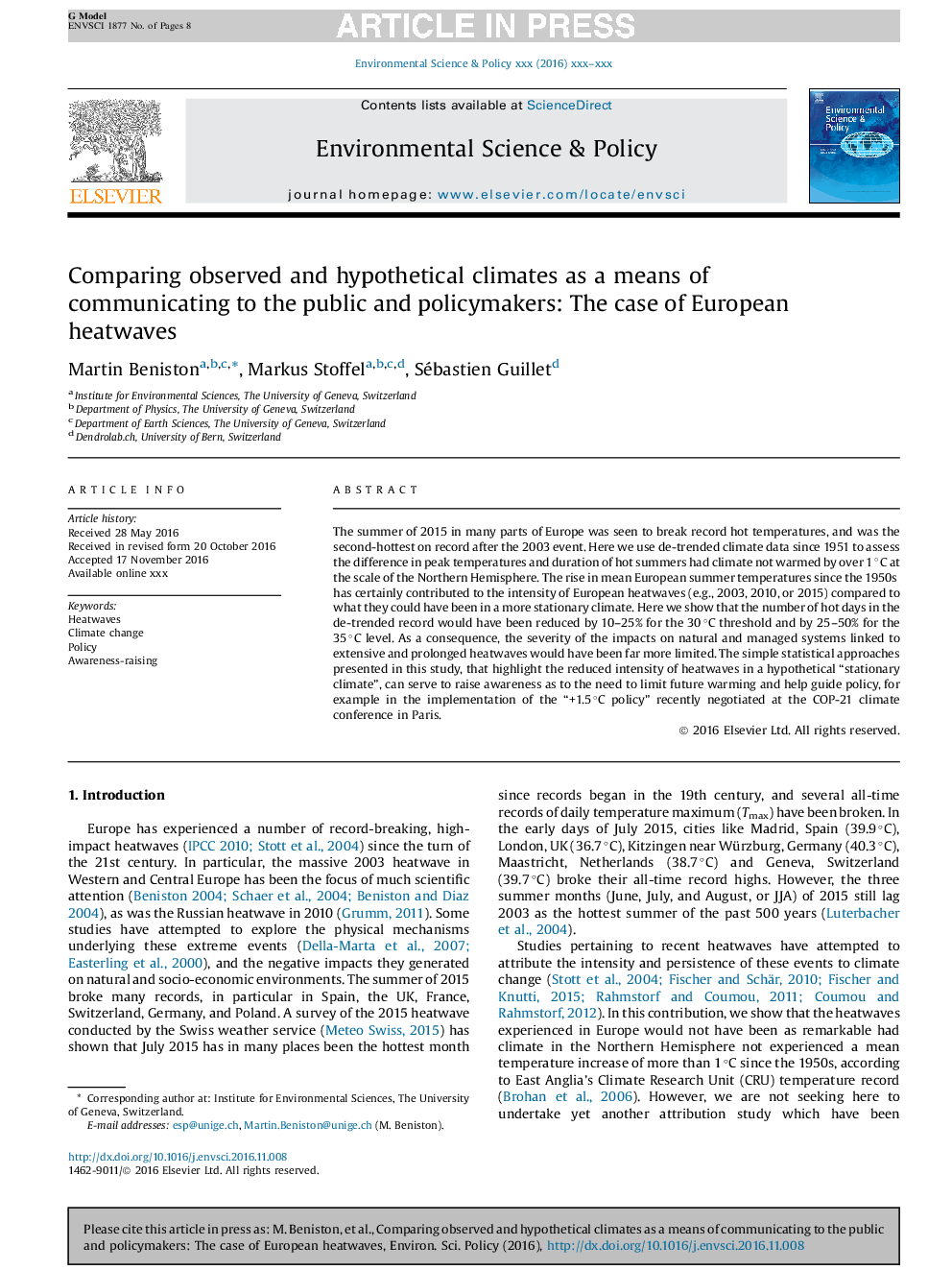| Article ID | Journal | Published Year | Pages | File Type |
|---|---|---|---|---|
| 5115810 | Environmental Science & Policy | 2017 | 8 Pages |
Abstract
The summer of 2015 in many parts of Europe was seen to break record hot temperatures, and was the second-hottest on record after the 2003 event. Here we use de-trended climate data since 1951 to assess the difference in peak temperatures and duration of hot summers had climate not warmed by over 1 °C at the scale of the Northern Hemisphere. The rise in mean European summer temperatures since the 1950s has certainly contributed to the intensity of European heatwaves (e.g., 2003, 2010, or 2015) compared to what they could have been in a more stationary climate. Here we show that the number of hot days in the de-trended record would have been reduced by 10-25% for the 30 °C threshold and by 25-50% for the 35 °C level. As a consequence, the severity of the impacts on natural and managed systems linked to extensive and prolonged heatwaves would have been far more limited. The simple statistical approaches presented in this study, that highlight the reduced intensity of heatwaves in a hypothetical “stationary climate”, can serve to raise awareness as to the need to limit future warming and help guide policy, for example in the implementation of the “+1.5 °C policy” recently negotiated at the COP-21 climate conference in Paris.
Related Topics
Physical Sciences and Engineering
Energy
Renewable Energy, Sustainability and the Environment
Authors
Martin Beniston, Markus Stoffel, Sébastien Guillet,
